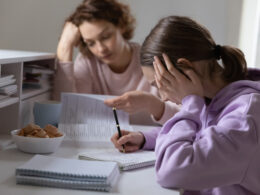No one wants to think about the dangers that lurk in and around water, especially when the sun’s out and they are having fun. However, in order to stay safe, it is important to consider the potential dangers when you and your child are in and around water.
While it is important that your child knows how to stay safe in the water, you should never leave them alone unsupervised.
Children can often forget all the good advice they have been told when they are excited, so it is important to ensure that you are there to remind them and to help them should they need it. To this end, you should refrain from drinking alcohol when near water, especially if you are solely responsible for rescuing your children if they get in trouble.

Also remember, that even if lifeguards are monitoring the beach, they will not necessarily notice if your child gets into trouble and do not assume that you will hear if they get into trouble in the water.
Teach your child to swim as soon as they are ready, which is usually by the age of four. Enrol them in lessons with a qualified instructor. The ability to swim is a useful skill and one that everybody should acquire. Having confidence in the water also means that children are able to get full enjoyment from water activities. However, being able to swim will not make your child ‘drown proof’, so when they are in and around water you still need to do what you can to ensure they are safe.
Older children are most at risk of drowning in open bodies of water, usually as a result of overestimating their ability. Over-confidence and showing off are usually factors in these incidents. Also, factors like undercurrents can get even the most experienced swimmers in trouble. Point out these possible dangers to your child and the areas that are out of bounds for swimming.
Follow the safety flag system at Blue Flag and other managed beaches. The flags are in rectangular form and the colours indicate the following: red over yellow flag demarcates the lifesaving boundary, green is for calm water, yellow for medium hazard, purple indicates the presence of pests (such as stinging jellyfish), red is for high hazard and the double red indicates that the water is closed for the public and the lifeguards may not risk their lives to enter the rough sea.

While very deep water can be dangerous for children, shallow water can also pose threats when it comes to diving. Most diving injuries occur in pools of water less than 150cm deep. Therefore, if your child is keen to dive, ensure that the pool of water they are diving into is at least this depth. Teach your child to dive with their hands in front of them and to swim towards the surface once they have entered the water so as to avoid hitting the bottom or the sides of the pool.
Do not let your child dive from balconies and ensure that diving boards are safe before diving from them. Never dive into above-ground pools, always use the steps provided.
Teaching your child to practise water safety and reminding them of the dangers that can exist at the pool or beach will mean they can spend the long summer days enjoying all that the water has to offer. Just don’t forget to put on sun cream!
For more top tips, click here. For more Child articles, follow this link.










